Outer Space Lesson Plan

Lesson Plan Mindmap for Outer Space ” Click to Enlarge
CLICK ICONS TO JUMP DIRECTLY TO EACH SUBJECT ON THIS PAGE








OUTER SPACE LESSON PLAN
This page is a free-shared lesson plan archive for teaching all educational subjects within the context and theme of “Outer Space”. It is purposed for use in community education environments, homeschool environments, traditional schooling environments, or as a supplemental and fun addition to any education program. As part of the complete Education for Life Program, this lesson plan is specifically designed to work in conjunction with the other components: Foundations of Teaching, Curriculum, Teaching Strategies, Learning Tools and Toys, Evaluation Model, and The Ultimate Classroom. If you’d like to learn how all these components work together, click here. Click here for the specifics focused on just using the lesson plans:
CLICK HERE FOR A DETAILED TUTORIAL ON HOW TO USE THIS LESSON PLAN
NOTE: The colors are provided as a possible linear progression (red/easiest to violet/most challenging) for people that might prefer a more linear structure. Our core philosophy, however, is that through creativity every color can be made easy or challenging for any learning level.
RELATED PAGES (mouse-over for descriptions and click for complete pages)
EDUCATION OVERVIEW | HOW TO USE THIS COMPONENT | OUR OPEN SOURCE PURPOSE
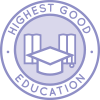
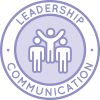
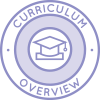
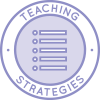
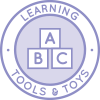
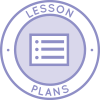
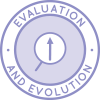
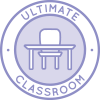
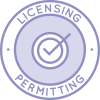

WAYS TO CONTRIBUTE TO EVOLVING THIS EDUCATION PROGRAM WITH US
SUGGESTIONS | CONSULTING | MEMBERSHIP | OTHER OPTIONS
A NOTE ABOUT ALL ONE COMMUNITY LESSON PLANS
The One Community lesson plans are intentionally designed for use in ANY educational environment and with ALL educational, cultural, religious/spiritual, and philosophical approaches to teaching and learning. They are designed without an ideological approach and specifically so they can be adapted to include the views, preferences, methodologies, and/or ideologies preferred by different parents and teachers.
For maximum flexibility and adaptation, they are also designed to be combined to teach multiple subjects at the same time. Doing this increases the creativity, effectiveness, and fun of your learning environment. Once we are on the property and operating our version of the complete school and Education for Life program, we will be adding video examples of how to combine the lessons. In the meantime, visit the Teaching Strategies page for a list of suggestions.
ARTS AND TRADES
CLICK HERE FOR THE COMPLETE SUBJECT OUTLINE FOR ARTS & TRADES
 | TEACHING ARTS AND TRADES WITHIN THE CONTEXT OF OUTER SPACE |

| The Arts- Look at some photos from outer space and then create your own finger painting* based on one of the photos.
- Write a song* about outer space, using either an existing tune or one you made up, and share it with others.
- Write a poem* about outer space and read it for others.
- Choose a photo of outer space that you like, and use pencil, charcoal, or another medium to sketch this photo by hand onto a piece of paper*. Display your sketching so that it is presented with the original photo and an explanation or title which explains the photo and sketching.
- Choose a photo of outer space that you like, and create a mosaic* inspired by that photo, using glue, beads, tiles, glass, and/or other materials.
- Choose a photo of outer space that you like, and create a stained glass* mosaic inspired by that photo.
- Working by yourself or with others, choreograph and perform (or have performed) a dance piece or play* inspired by something about outer space.
|

| Trades- Using clay, playdough, or something similar, create your miniature version of earth and your choice of another planet*, showing how big they are compared to one another (or even our solar system).
- Using whatever materials you’d like, create a space-themed backdrop* and a spaceship* that can fly around this backdrop.
- Using a computer and picture-editing software, create a digital collage* of pictures you like of outer space.
- With permission, find a surface (part of a wall or piece of furniture) and decorate* it using outer space as inspiration (e.g. planets, stars, asteroids).
- Imagine you are a tour guide who is going to take tourists to the Moon, Mars, or another location. Create a flyer* to sell your tour to others.
- Create a fun lesson plan* for teaching kindergarten children about outer space that includes at least 5 subjects and three life skills/values.
- Using whatever software you would like, create an animation* for the marketing or the website of a specific program, school, company, or product that is centered around introducing outer space in general or a specific element about outer space that you find interesting.
|
| CLICK HERE TO EMAIL US IF YOU HAVE AN IDEA TO ADD TO THIS SECTION |
* Please note that anything with an asterisk is just a suggestion. The diversity of options with asterisks are interchangeable and purposed to stimulate your own ideas. Any one of these suggestions could be replaced with a written paper, any form of art project (drawing, painting, music, paper mache, clay, wood, knitting/embroidery, metals, etc. etc.), an experiment, a presentation, a mindmap, a computer program, a web design project, a piece of poetry or a song, an interpretive dance or play, a group project, or anything else. What we feel is most important is that both the Learner and the Teacher agree on an exercise/activity they both feel would be maximally engaging, fun, and effective. If you come up with an idea we haven’t already thought of, please share it with us.
ENGLISH
CLICK HERE FOR THE COMPLETE SUBJECT OUTLINE FOR ENGLISH
Note: Any language can be substituted for English. The subject is listed here as “English” because that is the primary language of most of the people on the team, and the official language of the country we’re building our initial location in.
 | TEACHING ENGLISH WITHIN THE CONTEXT OF OUTER SPACE |

| - Choose a cartoon / comic about outer space and practice reading it out loud*. Then read it out loud to others.
- Type* out a paragraph about outer space – using either your own imagination or copying text out of a book.
- Learn the rules of telling a joke. Then practice telling 3 different jokes about outer space – either those you have made up or those found online or in books – to others. See whether or not it makes a difference if you break one of the rules*.
- Choose a page-long piece about outer space. Then underline the space-related words (e.g. names of planets). Make a list of these words, and then go online to find their origins (e.g. Greek, Latin, Anglo-Saxon)*.
- Learn the rules of making a good science-fiction comic strip. Then create 5 different science-fiction comic strips* and present them to others. See which one is found to be the most interesting and why.
- Learn about how to write science fiction and then write a science-fiction piece about outer space*.
- How do you set priorities and manage your time on Earth (a typical day, week)? Do some research into the life of astronauts, and compare and contrast* how they set priorities and manage their time in the International Space Station to your time management strategies on Earth. Discuss your findings with what others doing the same project have found.
- Read a book about outer space (fiction, science fiction) and write a narrative analysis*.
- Read a book about outer space (fiction, science-fiction, or non-fiction) and write a critical review*.
|
| CLICK HERE TO EMAIL US IF YOU HAVE AN IDEA TO ADD TO THIS SECTION |
* Please note that anything with an asterisk is just a suggestion. The diversity of options with asterisks are interchangeable and purposed to stimulate your own ideas. Any one of these suggestions could be replaced with a written paper, any form of art project (drawing, painting, music, paper mache, clay, wood, knitting/embroidery, metals, etc. etc.), an experiment, a presentation, a mindmap, a computer program, a web design project, a piece of poetry or a song, an interpretive dance or play, a group project, or anything else. What we feel is most important is that both the Learner and the Teacher agree on an exercise/activity they both feel would be maximally engaging, fun, and effective. If you come up with an idea we haven’t already thought of, please share it with us.
HEALTH
CLICK HERE FOR THE COMPLETE SUBJECT OUTLINE FOR HEALTH
 | TEACHING HEALTH WITHIN THE CONTEXT OF OUTER SPACE |

| - Learn about space food, what astronauts eat, and what nutritional needs are met. Using a paper plate and flyers from supermarkets, cut out things you would rather eat that would also meet these nutritional requirements and paste them onto the paper plate*.
- Find and read 3 reference books* about the physical health challenges that astronauts in the international space station face and the exercises they perform to help overcome these challenges.
- Read about astronauts and the spiritual experiences they have from seeing Earth from far away. Then write a short piece* about what you feel is your connection to Earth and various other living beings on this planet.
- Research loneliness astronauts face and recommended strategies for self-care and caring for others. Write a reflective piece* based on what you have learned.
- Research and write an essay* about how important being a team player is to astronauts on space missions. Include the research skills needed for being part of a team, including conflict management skills, some of which may be unique to the lives of astronauts but many of which may be applicable to our daily lives.
- Read a book that has a theme about spirituality and connecting outer space to inner person (e.g. Inner Paths to Outer Space, by Rick Strassman). Write a book report* including what you have learned from the book about various spiritual systems.
- Space is silent. Imagine you could and had to float around in space for 100 days by yourself, with no distractions. Research different practices of silence (e.g. vows of silence, monastic silence, silent meditation) and other spiritual practices. Write an essay* about how you would spend your 100 days and then introduce others to the practices you chose to incorporate in your plan.
|
| CLICK HERE TO EMAIL US IF YOU HAVE AN IDEA TO ADD TO THIS SECTION |
* Please note that anything with an asterisk is just a suggestion. The diversity of options with asterisks are interchangeable and purposed to stimulate your own ideas. Any one of these suggestions could be replaced with a written paper, any form of art project (drawing, painting, music, paper mache, clay, wood, knitting/embroidery, metals, etc. etc.), an experiment, a presentation, a mindmap, a computer program, a web design project, a piece of poetry or a song, an interpretive dance or play, a group project, or anything else. What we feel is most important is that both the Learner and the Teacher agree on an exercise/activity they both feel would be maximally engaging, fun, and effective. If you come up with an idea we haven’t already thought of, please share it with us.
MATH
CLICK HERE FOR THE COMPLETE SUBJECT OUTLINE FOR MATH
 | TEACHING MATH WITHIN THE CONTEXT OF OUTER SPACE |

| - Find a picture of our solar system, and number the planets from smallest to largest*.
- Find a picture of our solar system and label how far each planet is from the sun* (using the Internet or library resources). Optional: See if you can do this using both metric and imperial measurements.
- Determine the scale of planets and small moons in our solar system relative to our planet (i.e. Earth = 1 within the ratio x:1). Write down your results*.
- Estimate your weight on different planets and large moons in our solar system. Create a chart* to show this.
- Learn about the speed of light and compare it to the speed of the fastest spacecraft we currently have on Earth. Using the distance between Earth and the Sun, various other planets and other stars in space, estimate how many light years away from us these bodies are as well as how long a manned spacecraft would theoretically take to reach the same bodies using currently available technology. Graph* your estimates.
- Study circles and circular orbits and describe the mathematics of launching a space shuttle to dock on the International Space Station. Create a presentation* explaining what you have learned. Include the different stages of the mission, if possible. (Ex: launching, getting into orbit, regularizing the orbit, talk about the periapsis and apoapsis and include specific numbers that are realistic)
- Choose an aspect of mathematics in space that you would find interesting (e.g. solar flares and radiation) and write a report*. Include the practical applications of this knowledge to your life.
|
| CLICK HERE TO EMAIL US IF YOU HAVE AN IDEA TO ADD TO THIS SECTION |
* Please note that anything with an asterisk is just a suggestion. The diversity of options with asterisks are interchangeable and purposed to stimulate your own ideas. Any one of these suggestions could be replaced with a written paper, any form of art project (drawing, painting, music, paper mache, clay, wood, knitting/embroidery, metals, etc. etc.), an experiment, a presentation, a mindmap, a computer program, a web design project, a piece of poetry or a song, an interpretive dance or play, a group project, or anything else. What we feel is most important is that both the Learner and the Teacher agree on an exercise/activity they both feel would be maximally engaging, fun, and effective. If you come up with an idea we haven’t already thought of, please share it with us.
SCIENCE
CLICK HERE FOR THE COMPLETE SUBJECT OUTLINE FOR SCIENCE
 | TEACHING SCIENCE WITHIN THE CONTEXT OF OUTER SPACE |

| Life Sciences- Using the Internet or library resources, find some pictures of strange animals on Earth that look ‘alien’ or extra-terrestrial to you (e.g. deep ocean creatures). Using one of these and your imagination, draw a picture* of what an extraterrestrial might look like.
- Find out which plants have been successfully grown in space stations and spaceships. Create a visual display* and label the plants.
- In 2014, Russian astronauts found living organisms clinging to the outside of the International Space Station, which was identified to be sea plankton. Find out what sea plankton is and in a visual project*, explain why it can survive in space.
- Tardigrades were found in a 2007 experiment to be able to survive in space, the first animals that were found to be able to do so. Write a short piece* about this experiment and explain why humans cannot survive in space without the assistance of technology but Tardigrades can.
- Compare the growth of plants in zero gravity to the growth of animals (e.g. jellyfish, snails). Create a presentation* about this, including information about how plants and animals adapt to returning to Earth.
- Read about space greenhouses, which may be put onto Mars in 2021. Write an essay* explaining why humans would need plants and space greenhouses.
- Write and free share publish a well-researched essay* about current knowledge about the potential for humans to live in space one day and synthetic biology in space, including your views.
|

| Physical Sciences- Are Martian rocks red? Find out why Martian rocks are the color that they are. Discuss* this with an adult.
- What colors are the planets in our solar system? Choose at least two planets and find out why they are those colors (e.g. Why is Uranus blue?). (Option: divide the planets between group members and come together at the end to explain all the planets in our solar system). Draw a picture* of these planets in their correct colors.
- Find out what the chemical makeup of stars, including our Sun, is. Write a 1 page paper* about your findings.
- In terms of chemical makeup, in a 2 to 3 page paper*, compare the surfaces and atmospheres of the moon, Earth, Mars and other planets and moons in our solar system.
- What are organic compounds? Research whether or not there are organic compounds in Space, and if so, how they can be detected. Create a chart* that shows your findings.
- Investigate interstellar matter and medium. What is the chemical composition? Create a visual presentation*, including cosmic dust and nebulae, too.
- What is the Chemistry of star-forming regions, and how are stars formed? Create a digital presentation*.
|

| Earth Sciences- Find a picture of a meteorite from the Moon or Mars and print it out. Write down at least ten words* about that particular meteorite.
- Create a collage* using pictures of three different types of meteorites (irons, stones, and stony-irons). What is unique about each type?
- Find out what asteroids are and where the asteroid belt comes from. Create an electronic slideshow* showing what you have found.
- Find out how meteorites get to Earth and create an electronic slideshow* showing what you have found.
- Find out what the structure and composition of asteroids are and create an electronic presentation*.
- Find out what the structure and composition of a planet or moon of your choice and create an electronic presentation*.
- Research comets and create an electronic presentation* showing what you have found. Compare and contrast various properties of at least two well-known comets (e.g. Halley’s comet).
- Research why Pluto is no longer considered a planet by some scientiests and create an electronic presentation* showing what you have found. Include in the presentation information about different types of distant planetoids and at least one other minor planet that was originally considered a planet. Bonus points: Research and list all of the known ‘planetoids’ that’s orbits are further than Pluto’s.
- Write a well-researched essay* explaining how planets are formed, comparing the formation and properties of Jovian and Terrestrial planets.
- Write a well-researched essay*, about space and use famous research papers including theoretical physicist, Paul Steinhardt’s, paper: A New Paradigm for the Structure of Quasicrystals as a Springboard.
- Write a dissertation* choosing a violet earth science concept as your subject matter as it relates to outer space.
|
| CLICK HERE TO EMAIL US IF YOU HAVE AN IDEA TO ADD TO THIS SECTION |
* Please note that anything with an asterisk is just a suggestion. The diversity of options with asterisks are interchangeable and purposed to stimulate your own ideas. Any one of these suggestions could be replaced with a written paper, any form of art project (drawing, painting, music, paper mache, clay, wood, knitting/embroidery, metals, etc. etc.), an experiment, a presentation, a mindmap, a computer program, a web design project, a piece of poetry or a song, an interpretive dance or play, a group project, or anything else. What we feel is most important is that both the Learner and the Teacher agree on an exercise/activity they both feel would be maximally engaging, fun, and effective. If you come up with an idea we haven’t already thought of, please share it with us.
SOCIAL SCIENCES
CLICK HERE FOR THE COMPLETE SUBJECT OUTLINE FOR SOCIAL SCIENCES
 | TEACHING SOCIAL SCIENCES WITHIN THE CONTEXT OF OUTER SPACE |

| - Think of a three questions you would ask visitors from outer of space, and then think of three questions they would ask you. Perform a short play* about this.
- Different cultures interpret the stars in different ways. Find one constellation in your culture and one constellation in the astrology of another culture. Create a visual display*, including one paragraph about each of the constellations.
- Write a short report* explaining the history of the astrological system and constellations used in your culture.
- Write a short report* explaining the history of space exploration.
- Different cultures interpret the stars in different ways. Compare the astrology and constellations used in your culture with another culture’s system. Create a visual essay*.
- Write a well-researched essay* about Galileo, or others who had theories in conflict with religion. Include examples of thinkers who have been persecuted or executed for their theories’ conflict with contemporary religious beliefs and then whose theories proved to be scientifically correct later.
- Mars One is set to bring space colonists to Mars in 2020. Write a well-researched essay* about Mars One, or other potential space traveling devices; and the reasons people have given for signing up for this one-way trip to Mars.
- Write and publish a well-researched essay* about how human belief systems, interactions, and institutions affect space exploration.
- Make a videotaped presentation on the internet* about the politics of outer space, including any international treaties that exist.
|

| Foreign Languages
(Each of the following is to be completed in the foreign language(s) being studied)- Learn the names of the planets in our solar system.
- Using an online resource for children in your foreign language (e.g. children’s encyclopedia), select a paragraph about outer space and read the paragraph.
- Read a short story about space and write a short summary*.
- Create your own comic book* about outer space.
- Compose a short story to do with outer space (e.g. science fiction).
- Watch a movie or documentary related to the theme of outer space and then write a short review*.
- Read a university textbook chapter related to outer space. If questions are available at the end of the chapter, answer them. If not, think of 15 questions about the chapter and then answer them.
- Read a research paper related to outer space and write a review*.
|
| CLICK HERE TO EMAIL US IF YOU HAVE AN IDEA TO ADD TO THIS SECTION |
* Please note that anything with an asterisk is just a suggestion. The diversity of options with asterisks are interchangeable and purposed to stimulate your own ideas. Any one of these suggestions could be replaced with a written paper, any form of art project (drawing, painting, music, paper mache, clay, wood, knitting/embroidery, metals, etc. etc.), an experiment, a presentation, a mindmap, a computer program, a web design project, a piece of poetry or a song, an interpretive dance or play, a group project, or anything else. What we feel is most important is that both the Learner and the Teacher agree on an exercise/activity they both feel would be maximally engaging, fun, and effective. If you come up with an idea we haven’t already thought of, please share it with us.
TECHNOLOGY AND INNOVATION
CLICK HERE FOR THE COMPLETE SUBJECT OUTLINE FOR TECHNOLOGY AND INNOVATION
 | TEACHING TECHNOLOGY & INNOVATION WITHIN THE CONTEXT OF OUTER SPACE |

| Technology- Find out why you need to protect your eyes when viewing a solar eclipse. Then print out your favorite diagram or photo* of an invention that allows us to view solar eclipses. Find a diagram or photo of a contraption used to allow us to view a solar eclipse. (Option: work with an adult to create one of these).
- Find out how spacesuits work. Then design one of your own*.
- Find out how rockets work. Then design one of your own* and then build and test (with the assistance/supervision of an adult).
- Using a software (e.g. graphic design, 3D), portray* what you imagine to be a vehicle for future space travel.
- Write a well-researched report* about at least two systems of the International Space Station (eg. waste management, water management, energy production). Include your own reflection on how the designs could be improved and/or how these systems would be useful to your community, for example.
- Write and publish a well-researched report* about the technology involved in communication between technicians on earth and astronauts on the International Space Station.
- Create a presentation for young learners* about the invention of the telescope and the development of different types of telescopes (e.g. visible light, infrared, UV, x-rays). Make your presentation to the young learners on your community and other locations if possible*.
|

| Innovation- Look at a photo of some part of space and then, with your eyes closed, imagine what it would feel like to go to that place. Write down at least one word* that describes what you feel during this exercise.
- After reading about our solar system, visualize flying through it from planet to planet. Make a mental note of what you feel and see, for example, and write a paragraph with these* after the exercise.
- Write a short essay* about your identity, considering that the Earth rotates around the sun, and our solar system sits in an obscure area of the Milky Way. Include how you imagine someone without this knowledge may have a different identity.
- Imagine you are going to embark on a journey through our solar system and create vision board* of what you would like to see or have happen.
- Choose one career related to outer space, and in a poster*organize and display the steps you would have to take in order to have that career.
- Read a book about new ideas on outer space as it relates to humanity and Earth (e.g. Eckhart Tolle’s A New Earth). Write a book review and include a reflective piece*, about Earth’s place in our solar system, galaxy, and galaxy cluster.
- Read “Talking with Planets” by Nikola Tesla (1901). Use that as a springboard for exploration of Tesla’s inventions and create a visual essay*.
|
| CLICK HERE TO EMAIL US IF YOU HAVE AN IDEA TO ADD TO THIS SECTION |
* Please note that anything with an asterisk is just a suggestion. The diversity of options with asterisks are interchangeable and purposed to stimulate your own ideas. Any one of these suggestions could be replaced with a written paper, any form of art project (drawing, painting, music, paper mache, clay, wood, knitting/embroidery, metals, etc. etc.), an experiment, a presentation, a mindmap, a computer program, a web design project, a piece of poetry or a song, an interpretive dance or play, a group project, or anything else. What we feel is most important is that both the Learner and the Teacher agree on an exercise/activity they both feel would be maximally engaging, fun, and effective. If you come up with an idea we haven’t already thought of, please share it with us.
VALUES
CLICK HERE FOR THE COMPLETE SUBJECT OUTLINE FOR VALUES
 | TEACHING VALUES WITHIN THE CONTEXT OF SPRING |

| - Brainstorm with an adult* about 3 ways you would show kindness to a visitor from another planet, solar system, or galaxy.
- Make a list* of 5 things related to outer space that you are grateful for.
- Imagine what an intergalactic community is like. Create a word cloud and describe at least 5 ways you would contribute to this community*.
- Imagine that you meet visitors from another planet, solar system, or galaxy. Write a short story* showing how would show them hospitality.
- Write an essay* about taking care of the Earth versus developing space colonies. Argue which is better, showing your point of view.
- Research the uses of satellites. Write an essay* weighing the good uses for them versus the bad ones (responsibility, integrity). Include ways which you think the situation could be improved.
- Create a videotaped presentation for the web* on the arms race in outer space, including all key geopolitical players and their overt and hidden motivations. Open source your presentation.
|
| CLICK HERE TO EMAIL US IF YOU HAVE AN IDEA TO ADD TO THIS SECTION |
* Please note that anything with an asterisk is just a suggestion. The diversity of options with asterisks are interchangeable and purposed to stimulate your own ideas. Any one of these suggestions could be replaced with a written paper, any form of art project (drawing, painting, music, paper mache, clay, wood, knitting/embroidery, metals, etc. etc.), an experiment, a presentation, a mindmap, a computer program, a web design project, a piece of poetry or a song, an interpretive dance or play, a group project, or anything else. What we feel is most important is that both the Learner and the Teacher agree on an exercise/activity they both feel would be maximally engaging, fun, and effective. If you come up with an idea we haven’t already thought of, please share it with us.

OTHER RESOURCES
We're building a resource section. Click here if you have a suggestion or resource for this page.
OPEN SOURCE SUBJECT RESOURCES (click icons for complete pages)



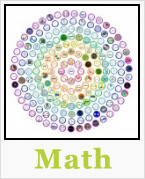



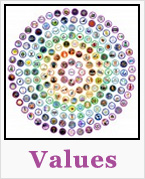
OPEN SOURCE CURRICULUM OUTLINES (click image for summaries and links to complete pages)
CARE
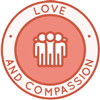
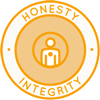
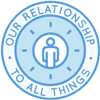
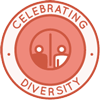
SHARE
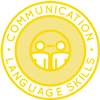
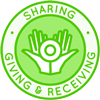
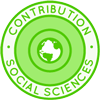
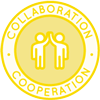
PLAY
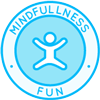
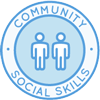
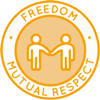
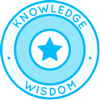
OPEN SOURCE TEACHING METHODOLOGY SUMMARIES
Montessori | Waldorf | Orff | Reggio | Multi-Intelligence | Bloom's Taxonomy | Study Tech | I-WE
INDEX OF ALL THE ONE COMMUNITY OPEN SOURCE LESSON PLANS

Click this image for the Lesson Plans for Life page with links to the rest of the lesson plans
THE WORLD'S LARGEST ONLINE FREE EDUCATION RESOURCE ARCHIVE
RELATED CONTENT AND OTHER RELATED RESOURCES
We're building this resource section. Click here if you have a suggestion or resource for this page.

























 One Community
One Community




